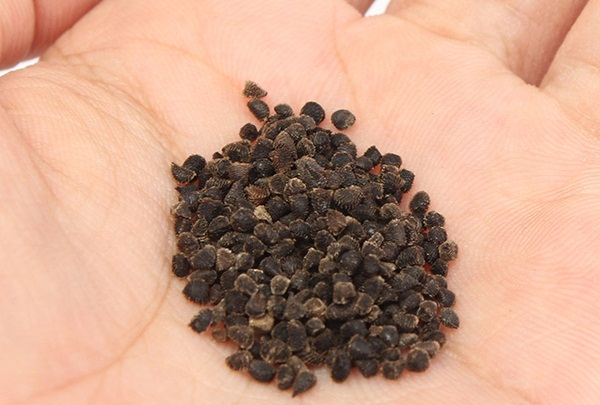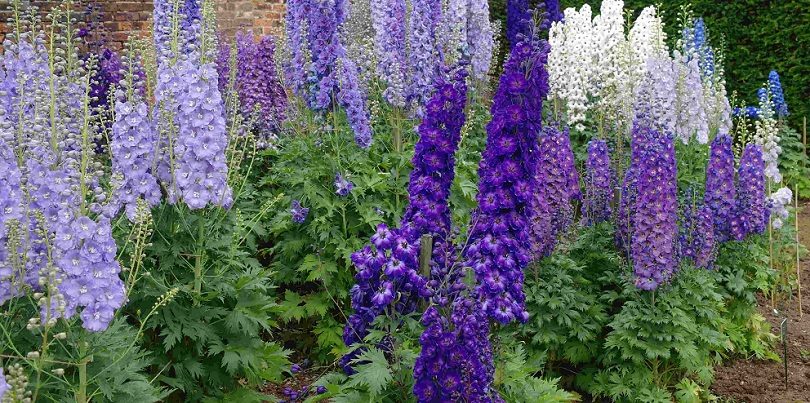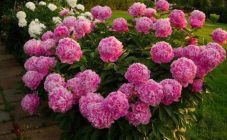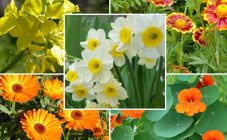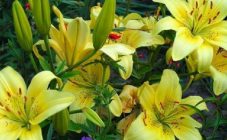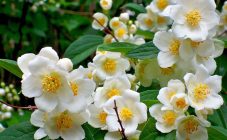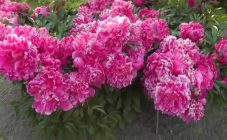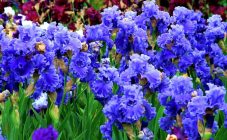Content:
Delphinium is a wonderful decorative flower that is distinguished by a variety of species and varieties. Currently there are more than 450 of them. Shrubs delight the eye with a riot of colors. The plant takes root well in the southern regions and in central Russia. It loves moderately moist soil on sandstone or loam, but it is important that the soil is rich in humus. In a warm climate, the flowering period of the bush falls on the last month of spring - early summer, and in the temperate continental climate, delphiniums bloom in June-July. In the warm autumn months, the plant blooms again. This can also be achieved at home if the stems are properly trimmed.
Flower history
The history of the emergence of the name of the flower is quite interesting. According to one version, the delphinium got it thanks to the shape of its inflorescences, reminiscent of a playful ocean inhabitant. There is also a wonderful legend according to which the name of the flower is akin to the name of the city of Delphi in Greece, where the plant was allegedly discovered for the first time.
Others are inclined to believe that the flower appeared in connection with specific circumstances, and they cite a story about love that conquered death and fidelity. According to ancient history, the ancient master made a beautiful statue of a beloved who died. The young man put so much inspiration into the work that he was able to revive the stone, which caused the displeasure of the gods of Olympus. They turned the young man into the eternal inhabitant of the seas - the dolphin. The only thing that the poor fellow managed to do was to bring a beautiful flower at the feet of the resurrected beloved, when she bitterly cried for him on the shore.
How to feed a delphinium before flowering
It should be noted that fertilizer is applied three times before the flowering of the plant:
- preliminary feeding in the spring after the snow cover disappears;
- just before flowering, when bud formation has just begun;
- before possible re-flowering in the last month of summer.
Preliminary spring feeding is a prerequisite for the successful formation of a plant and giving it sufficient strength in the process of development for the formation of flowers. In order not to have to wonder why the delphinium does not grow or bloom, you should adhere to some important recommendations.
The composition of top dressing should include 1 part of ammonium nitrate, 2 parts of potassium chloride, 2 parts of ammonium sulfate and 4 parts of superphosphate. All elements are mixed into one dry composition and distributed around the required number of bushes, while the mixture should be deepened into the soil by 5-7 cm. The same fertilizer composition should be mixed and similarly applied in August. The amount of top dressing received can vary, so it should be prepared as much as needed, that is, any amount, but in compliance with the indicated proportions. If the flowering of the plant is not predicted, fertilizing without nitrogen is used, mainly potassium-phosphate.
When the buds have already formed, 1.5 parts of superphosphate are taken for 1 part of potassium, and the soil is fertilized with this scatter in the manner described above.
Compliance with the above recommendations will allow the gardener to count on an excellent result and a wonderful replenishment of the collection of flowering plants in his personal plot. Delphiniums will delight everyone who is nearby in the warm summer months, and with proper care - in the autumn sun. However, one should not forget to properly prepare these delicious plants for the cold weather. So, the delphinium has faded, what to do next?
Delphinium after flowering: how to prune properly
Many factors can inhibit the perennial delphinium after flowering. What to do to prevent the plant from becoming weakened, to ensure a safe wintering and a supply of vitality for the next year?
This is especially true for a seed-germinated bush that has not previously grown in temperate climates. As for the "local" species that have been growing for decades with grandmothers in gardens or in private plots, they are more resistant, but they also require pruning and culling of stems in order to prevent the development of decay of the root collar.
So, delphiniums have faded, what to do with them next? The degree of pruning of a delphinium after the first flowering depends on the condition of its ground part. Before pruning the plant after summer and autumn flowering, remove the peduncles (break out), all dry leaves, cut out areas damaged by fungus and other diseases (powdery mildew, black spot). Then the remaining healthy part is cut off, leaving at least 30 cm above the ground. This procedure is best done in dry weather so that moisture does not get inside and new viruses do not develop. If pruning occurs in the fall, you can brush the stems with clay.
Features of pruning after the first flowering
Many are interested in the question: how to choose the right option and safely and carefully cut the delphinium after the first flowering. To do this, you should take into account some of the features of working with young plants:
- If the delphinium is still young enough and is preparing for its first wintering, and the bush has not grown enough, the best option would not be to cut it, but to postpone it until spring.
- It is better to tilt the peduncles and stems of the plant and leave them lying on the ground. This is necessary so that the dormant buds at the base of the stems do not activate until next year.
- Cover the plants with pine or spruce paws, or create a cozy cushion of air from dried grass stalks.
What to do if the delphinium does not bloom
As a rule, plants that are not germinated from seeds, but obtained from cuttings or by dividing a bush, flower well. However, flowering is unlikely in the first year. But, if the flower is carefully looked after, the delphinium will release a single peduncle with several flowers, which is not always noticeable. This is absolutely normal - the beauty of each type of perennial plant varieties shows itself for 2-3 years after planting in the ground. In any case, despite the lack of buds, it is imperative to apply fertilizer annually. This will allow the delphinium to live fully and ensure its flowering.
If the disease raged in the summer, you may notice that at first the plant cannot fully bloom, and then the leaves and stems wither and fall off. At the same time, the dead remains contain an infection in themselves and on their surface, which spreads to all delphiniums, if the source is not identified and treated in time. Often shrubs affected by ring spot are destroyed completely to prevent the spread of the disease in the area.
Another reason for the lack of desirable flowers may be that the delphinium is severely neglected due to lack of proper care after flowering in the open field. The formation of sloppy thickets should not be allowed, you need to break out or cut out old peduncles in time, remove yellowed stems and leaves. It should be checked whether the plants have overcome the pests. The delphinium fly lays its eggs directly in the buds that have not yet formed, and the hatched offspring feeds on parts of the future flower, preventing it from appearing. In this case, it makes sense to treat the shrubs with special preparations.
Flowers may not appear also because the delphinium was grown in one place for too long. If the plant hasn't been replanted for many years, it's time to prepare new soil for it, fertilize the soil and transfer it to a new location. Only a year after such a procedure can one hope to see renewed clusters of buds. Among other things, it should be noted that the delphinium is sensitive to leaving after flowering in the open field. It also needs sufficient watering while fertilizing.
If you do not follow the buds, in the future, a careless attitude can become one of the reasons why the delphinium does not bloom. The fact is that the shoots of the plant are very fragile, and to support them around the perimeter of the bush, you need to drive in stakes of the same height as the stem. The first time the peduncles are tied up when they reach 0.5 m, and then at a height of 1 - 1.2 m.
There are many opportunities to learn how to take care of delphiniums in your backyard. These bright and unusual plants will not leave anyone indifferent, they will bring a lot of positive impressions to their owners. Caring for them at first is quite painstaking, but attention to all the subtleties and the choice of the right variety of flowers allows you to achieve remarkable results.
